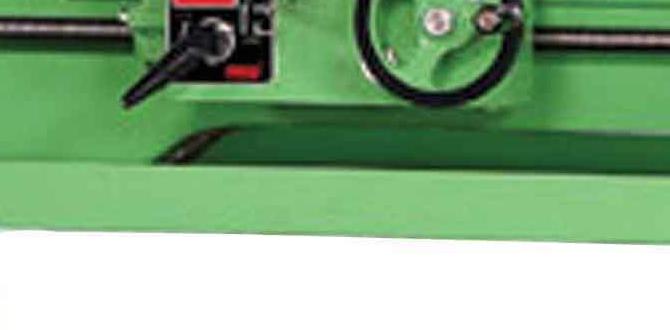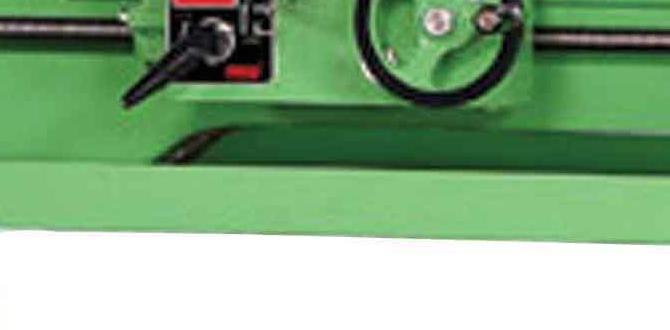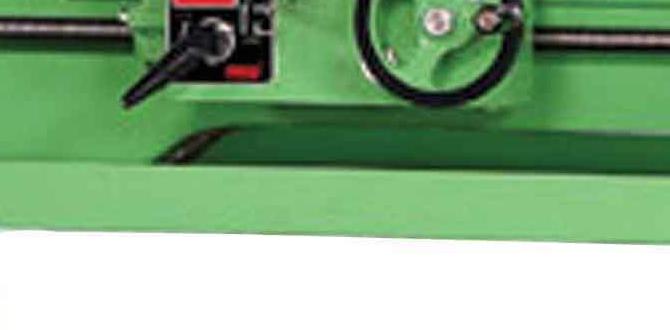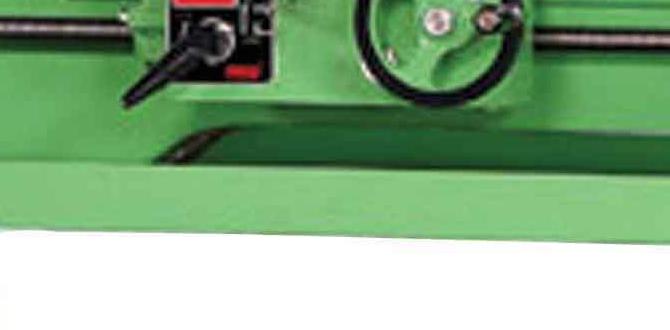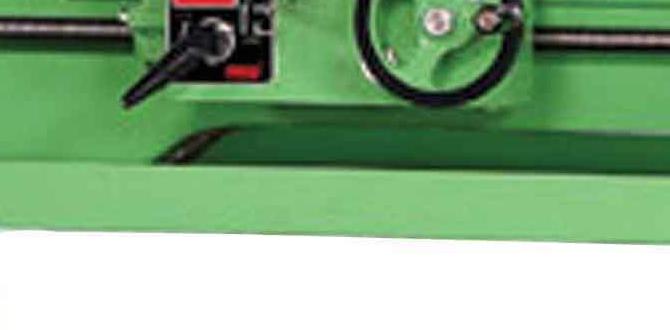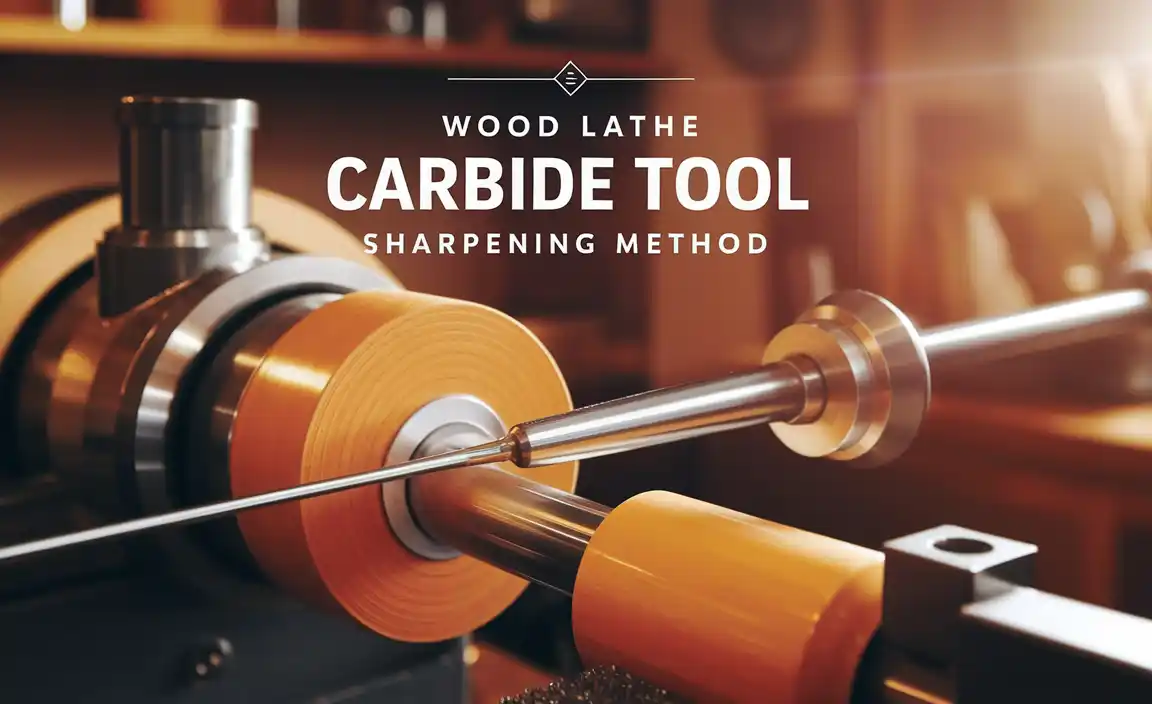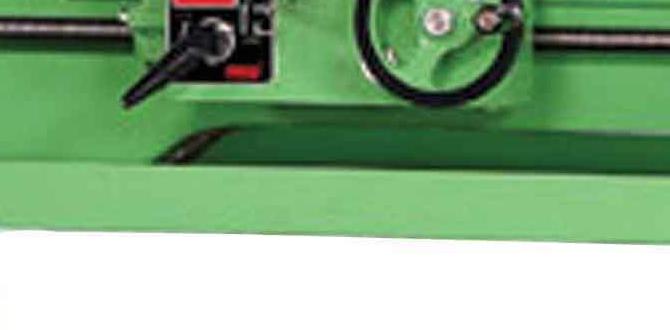The biggest difference between an indexable face mill and a shell mill for HDPE is how they cut and what they’re best suited for. An indexable face mill uses replaceable inserts to create a flat surface, while a shell mill is a solid cutter with integrated cutting teeth, often better for general-purpose facing and profiling on plastics like HDPE.
When you’re working with High-Density Polyethylene (HDPE), choosing the right cutting tool makes a world of difference. It can be the difference between a clean, precise cut and a messy, frustrating job. Many beginners find themselves staring at the options, wondering, “Which mill should I use for this plastic?” It’s a fair question, and today, we’re going to clear it all up. We’ll explore the world of indexable face mills and shell mills specifically for machining HDPE, making sure you have the confidence to pick the right tool for your project. Get ready to turn that confusion into clarity, and let’s get your HDPE projects looking sharp!
Understanding Your Tools: Indexable Face Mills and Shell Mills
Before we dive into the comparison, let’s get to know our two contenders. Both indexable face mills and shell mills are used for similar types of machining operations, primarily facing (creating a flat surface) and sometimes profiling (cutting shapes). Their design and how they cut, however, lead to different strengths and weaknesses, especially when working with a material like HDPE.
What is an Indexable Face Mill?
Imagine a sturdy body, almost like a wheel, with pockets. Into these pockets, small, incredibly sharp, replaceable cutting inserts (called “indexable inserts”) are securely fastened. That’s the basic idea behind an indexable face mill.
Design: The body is robust and designed to hold multiple inserts. These inserts have sharp cutting edges that do the actual material removal.
How it Cuts: When the face mill spins, the inserts engage the workpiece, shaving off material. Because it has multiple inserts, it can remove a good amount of material quickly and leave a relatively smooth surface.
Indexable Inserts: The magic is in the inserts. They are often made of hard materials like carbide or ceramics. When one edge gets dull or chipped, you simply “index” the insert to a fresh edge or replace it entirely. This is a huge advantage for tool life and cost-effectiveness in the long run.
Application: Primarily used for creating flat surfaces (facing operations) on workpieces, but can also be used for light profiling.
What is a Shell Mill?
A shell mill is a type of milling cutter that has a somewhat simpler, often solid construction. Instead of replaceable inserts held in pockets, the cutting edges are often integral to the cutter body itself. They are designed to mount onto an arbor (a shaft that fits into the milling machine spindle).
Design: Typically, a shell mill is a disc-shaped cutter with cutting teeth around its periphery and sometimes on its face. They are often made from high-speed steel (HSS) or carbide.
How it Cuts: Similar to a face mill, it spins to remove material. The teeth on the perimeter and face do the work. For facing operations, the teeth on the diameter and the face both contribute to creating a flat surface.
Integrated Teeth: The cutting edges are part of the cutter body. If teeth become dull or damaged, the entire cutter might need to be resharpened or replaced.
Application: Very versatile. Excellent for facing, but also commonly used for grooves, slots, and general milling tasks. They can be particularly good for lighter-duty operations or when a simpler setup is desired.
Indexable Face Mill vs. Shell Mill for HDPE: The Key Differences
Now that we have a basic understanding of each tool, let’s directly compare them when it comes to machining HDPE. HDPE is a thermoplastic, known for being tough, flexible, and prone to melting if too much heat is generated. These characteristics heavily influence how we choose our cutting tools.
Cutting Action and Surface Finish
This is where the most significant differences emerge.
Indexable face mill: With its sharp, precisely ground inserts, an indexable face mill can often achieve a very smooth and consistent surface finish on HDPE. The ability to use specific insert geometries designed for plastics can further enhance this. Because the inserts are individually set, they ensure a flat cutting plane.
Shell Mill: The surface finish from a shell mill can vary. If it’s a well-sharpened HSS or carbide shell mill, it can produce a decent finish. However, due to the nature of integrated teeth and potentially less adaptable geometries for thermoplastics, you might find a slightly rougher finish compared to an optimized indexable face mill. For HDPE, excessive heat can also lead to the plastic melting and sticking to the cutter teeth, creating a gummy surface.
Material Removal Rate (MRR) and Efficiency
How much material can you remove and how fast?
Indexable Face Mill: Generally, indexable face mills, especially larger ones with multiple inserts, can achieve a higher Material Removal Rate (MRR). This means you can take deeper cuts or faster passes to remove material more quickly. This is especially true with tougher grades of HDPE or larger surface areas.
Shell Mill: Shell mills are usually good for moderate MRR. They can handle decent material removal, but for very aggressive cutting or large-scale facing, an indexable face mill might pull ahead in efficiency due to its higher number of cutting points and designed-for-purpose inserts.
Tool Cost and Longevity
What’s the investment, and how long will it last?
Indexable Face Mill: The initial cost of an indexable face mill (the body plus a set of inserts) can be higher than a comparable shell mill. However, the longevity comes from the inserts. When an insert dulls, you just replace or flip it. A full set of inserts can last a very long time, making the cost per part very economical for high-volume or frequent use.
Shell Mill: A shell mill can be more affordable upfront. However, when the teeth dull, you often have to resharpen the entire cutter, which requires specialized grinding equipment and skill. If the teeth get significantly damaged, you might need to buy a new cutter altogether. For hobbyists or occasional use, this might be less of a concern.
Setup and Versatility
How easy is it to set up and use for different jobs?
Indexable Face Mill: Setting up an indexable face mill often involves ensuring each insert is seated correctly and tightened. The versatility comes from being able to change insert types and grades for different materials and cutting strategies.
Shell Mill: Shell mills are generally straightforward to mount on an arbor. Their versatility lies in their ability to tackle various tasks, from facing to slotting, depending on the cutter’s design. However, they are less adaptable in terms of changing cutting characteristics on the fly like you can with indexable inserts.
Heat Management with HDPE
This is crucial for plastics.
Indexable Face Mill: By using specific grades of inserts and optimizing cutting parameters (feed rate, spindle speed), you can effectively manage heat. The sharp, clean cutting action of indexable inserts can help reduce friction and heat buildup, a major benefit when machining HDPE. You can also use inserts designed for plastic that have specialized coatings or geometries.
Shell Mill: With a shell mill, especially if the teeth are not optimally sharp or ground for plastics, you can generate more friction and heat. This can lead to melting, gumming, and a poor surface finish. Controlling heat is paramount with HDPE, and shell mills might require more delicate parameter control to prevent issues.
When to Choose Which: Practical Scenarios for HDPE Machining
Let’s put this into practice. When would Daniel Bates, your friendly neighborhood machinist, pick one over the other for an HDPE project?
Choose an Indexable Face Mill for HDPE When:
Achieving a Superior Surface Finish is Critical: If the part needs to look smooth and professional, like a mounting surface or a visible component, an indexable face mill with plastic-specific inserts will likely give you the best results.
High Production Volume or Frequent Use: The long-term cost-effectiveness of replacing inserts rather than discarding or regrinding entire cutters makes indexable mills ideal for business or serious hobbyists who do a lot of machining.
Maximizing Material Removal Rate: When you need to flatten a large surface quickly or remove a significant amount of material, the power and efficiency of an indexable face mill with its multiple cutting points shine.
Precise Depth Control is Needed: The rigid setup and precise insert positioning allow for very accurate depth of cut settings.
Working with Various “Grades” of HDPE: Different formulations of HDPE might require different cutting approaches. The ability to swap inserts with different geometries, coatings, or materials (like high-speed steel for softer plastics, or carbide for harder ones) provides immense flexibility.
Choose a Shell Mill for HDPE When:
Budget is a Primary Concern (Upfront Cost): If your budget for tooling is tight, a good quality shell mill might be a more accessible starting point.
Occasional or Hobbyist Use: For infrequent tasks or smaller projects, the simplicity of setting up and sharpening a shell mill can be appealing.
General Purpose Facing and Profiling: When you need a tool that can handle a range of milling tasks and a near-perfect finish isn’t the absolute top priority, a shell mill is a good all-rounder.
Simplicity of Setup is Preferred: For beginners who are just getting accustomed to milling, a shell mill can be less intimidating to mount and use than an indexable system.
Machining Smaller Parts or Less Demanding Tasks: For smaller HDPE projects where the material removal is minimal and heat isn’t a major concern, a shell mill can perform admirably.
Essential Considerations for Machining HDPE
No matter which tool you choose, machining HDPE comes with its own set of challenges and best practices. Here are some tips to ensure success:
1. Chip Evacuation is Key!
HDPE tends to produce long, stringy chips. If these chips aren’t cleared away from the cutting zone, they can re-melt, clog the cutter, and cause surface finish problems or even tool breakage.
Use Lubricant/Coolant (Carefully): While pure water or air blasts are often preferred for plastics to avoid chemical reactions, a light mist coolant or a suitable cutting fluid can help manage heat and chip formation.
High Airflow: A strong blast of compressed air directed at the cutting zone is invaluable for blowing chips away.
Clearance: Ensure your tooling and machine setup allows chips to flow freely.
2. Manage Cutting Parameters Wisely
Spindle Speed (RPM): Generally, you want to use higher spindle speeds for plastics. This allows the cutting edge to pass through the material quickly, generating less localized heat.
Feed Rate: A moderate to fast feed rate is usually recommended. Too slow a feed rate with a high RPM can lead to excessive heat. A faster feed rate helps the cutter produce a chip rather than rub against the material. Always start conservatively and adjust.
Depth of Cut: For facing operations, especially on larger machines, take relatively light depths of cut. This reduces the load on the cutter and helps manage heat.
3. Tool Sharpness and Geometry
Sharpness: This cannot be stressed enough. Dull tools rub, generate heat, and produce poor results. Ensure your inserts or shell mill teeth are sharp.
Rake Angles: For plastics, you often want tools with positive rake angles. This means the cutting edge is angled forward, creating a shearing action that cleanly cuts the material rather than pushing or deforming it. This is particularly easy to achieve with specific indexable inserts designed for plastics.
4. Securing Your Workpiece
HDPE can be slippery and deformable. Make sure your workpiece is clamped securely and won’t move during the milling operation. Use workholding methods that spread the clamping force to avoid deforming the plastic.
A Quick Look at Recommended Tools and Inserts for HDPE
When you’re ready to buy, here are some types of tools and inserts that tend to work well for HDPE:
Indexable Face Mills: Look for face mills with styles like the “Seating” type (e.g., APKT, SEKT inserts) which are good and robust. The cutter bodies themselves come in various diameters.
Inserts for Plastics: Key insert geometries are those with a high positive rake angle. Materials like PVD-coated carbide or even specific types of highly polished steel inserts can be beneficial. Manufacturers like Sandvik Coromant, Kennametal, and Iscar offer specific product lines for machining plastics. Always check their recommendations or consult with a tool supplier.
Shell Mills: For shell mills, opt for carbide for better wear resistance and heat handling than HSS, especially if you plan to run at higher speeds. You’ll want a shell mill designed for general-purpose milling.
Table: Indexable Face Mill vs. Shell Mill for HDPE – At a Glance
This table summarizes the key aspects we’ve discussed, helping you make a quick decision.
| Feature | Indexable Face Mill | Shell Mill |
|---|---|---|
| Primary Function | Precise Facing, Achieving Flatness | General Purpose Facing, Profiling, Slots |
| Cutting Inserts | Replaceable, Indexable Inserts | Integral Cutting Teeth (often sharpened or replaced as a unit) |
| Surface Finish (HDPE) | Excellent, Smooth, Consistent | Good to Very Good (depends on sharpness & geometry) |
| Material Removal Rate (MRR) | High | Moderate to High |
| Tool Life / Cost-Effectiveness | High (insert replacement) | Moderate (resharpening/replacement costs) |
| Initial Tool Cost | Higher | Lower to Moderate |
| Setup Complexity | Moderate (insert seating) | Simple |
| Heat Management (HDPE) | Easier with optimized inserts/parameters | Requires careful parameter control |
| Versatility (Adaptability) | High (insert selection) | Moderate (general purpose) |
Safety First in the Workshop!
Before you start any machining, always remember that safety is your top priority.
Wear Safety Glasses: ALWAYS wear ANSI-approved safety glasses or a face shield. Chips, even from plastic, can be dangerous.
Machine Guarding: Ensure all guards on your milling machine are in place and functioning correctly.
Tooling Security: Double-check that your cutter is securely mounted in its holder or on the arbor. A loose tool can be catastrophic.
Stable Workholding: Make sure your HDPE part is firmly clamped. A shifting workpiece can lead to dangerous situations.
Know Your Machine: Familiarize yourself with your milling machine’s controls and emergency stop procedures.
Read Tool Manuals: If using new tooling, especially indexable inserts, read the manufacturer’s recommendations for speeds, feeds, and clamping.
For more on safe machining practices, the Occupational Safety and Health Administration (OSHA) provides comprehensive guidelines that are valuable for any workshop. You can find their resources on OSHA’s Machine Guarding Page.
Frequently Asked Questions (FAQ)
Here are some common questions beginners have about indexable face mills and shell mills for HDPE:
What is the best cutting speed for HDPE on a milling machine?
For HDPE, you generally want higher spindle speeds. A good starting point for a typical indexable face mill or a sharp shell mill might be anywhere from 500 to 2000 SFM (Surface Feet per Minute), but this can vary greatly. Always consult your tooling manufacturer’s recommendations or perform test cuts. For example, a 4-inch diameter face mill at 2000 SFM would run at roughly 1900 RPM (SFM 3.82 / Diameter_in_inches).
Can I use a standard indexable face mill insert for HDPE?
While standard general-purpose inserts might work, they are usually not optimized for plastics. Inserts with a higher positive rake angle, a sharper cutting edge, and sometimes a polished or PVD coating are far more effective for HDPE. These help reduce friction and prevent melting.
How do I prevent HDPE from melting when milling?
Managing heat is crucial. Use sharp tooling, appropriate cutting speeds and feed rates (higher RPM, moderate to fast feed), take lighter depths of cut, and ensure good chip evacuation. A blast of compressed air is often more effective and cleaner than liquid coolants for plastics.
What is the difference between a face mill and an end mill?
A face mill is primarily designed to cut on its diameter and its face simultaneously to create a flat surface over a large area. An end mill is designed to cut on its periphery (sides) and can be plunged into material. While some end mills can do light facing, a dedicated face mill is far more efficient for true facing operations.
Is High-Speed Steel (HSS) suitable for milling HDPE?
HSS can be used for shell mills or end mills on HDPE, especially for lighter cuts or hobbyist applications. However, carbide tooling generally offers better wear resistance and can handle higher cutting speeds and temperatures, making it a more robust choice for demanding applications or production runs.
Conclusion: Choosing the Right Tool for Your HDPE Project
So, there you have it! The seemingly complex choice between an indexable face mill and a shell mill for your HDPE projects boils down to understanding their strengths.
If you’re aiming for that perfect, smooth finish, tackling larger projects, or planning to machine a lot of HDPE

